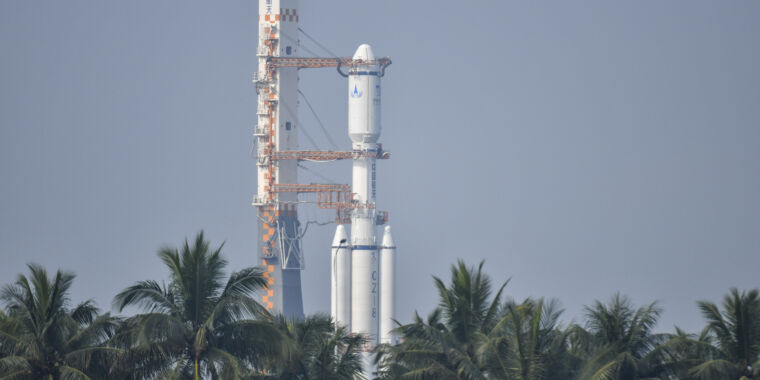China Launches New Lunar Data Relay Satellite
The launch of a new data relay satellite marks the next phase of China’s Moon program. The satellite, named Queqiao-2, will serve as a communication link between lunar landers and rovers on the far side of the Moon and Earth-based ground controllers. The launch is scheduled for approximately 8:31 pm EDT (00:31 UTC).
Queqiao-2 will be sent into an elliptical orbit around the Moon and positioned in preparation for the upcoming arrival of China’s Chang’e 6 robotic lunar lander later this year. The spacecraft will be launched aboard a medium-lift Long March 8 rocket from the Wenchang launch base in southern China.
The Long March 8 rocket, powered by kerosene, is part of a new generation of Chinese rockets that aim to replace older designs burning toxic propellant. Upon liftoff, the rocket’s upper stage will deploy Queqiao-2, which will then carry out maneuvers to establish its orbit around the Moon.
Satellite Features and Mission
Queqiao-2, once in orbit, will enter a stable “frozen” orbit to optimize fuel consumption during its mission. The spacecraft’s elongated orbit will allow it to linger over the landing sites selected for China’s future robotic Moon missions.
In addition to Queqiao-2, two smaller satellites, Tiandu-1 and Tiandu-2, will also be aboard the Long March 8 rocket. These satellites will conduct inter-satellite ranging tests, aiding in the development of a lunar satellite constellation for data relay and navigation purposes in the next decade.
Far-Side Lunar Operations
Chang’e 6, set to launch in May on a heavy-lift Long March 5 rocket, will be China’s first lunar lander relying on the new data relay satellite. The mission aims to collect samples from the far side of the Moon, an endeavor not yet achieved by any nation. Chang’e 6 will bring back these samples for detailed analysis on Earth.
China’s previous mission, Chang’e 5, successfully landed on the near side of the Moon and returned samples to Earth in 2020. With Chang’e 6, China seeks to obtain rocks from the far side of the Moon, presenting new specimens for study.
China’s prior mission to the far side of the Moon, Chang’e 4 in 2019, also utilized a data relay satellite named Queqiao-1, deployed in 2018. Queqiao-2, launched as part of the current mission, is a larger spacecraft, weighing over 2,600 pounds fully fueled and designed to enhance lunar communication efforts.
Image/Photo credit: source url





